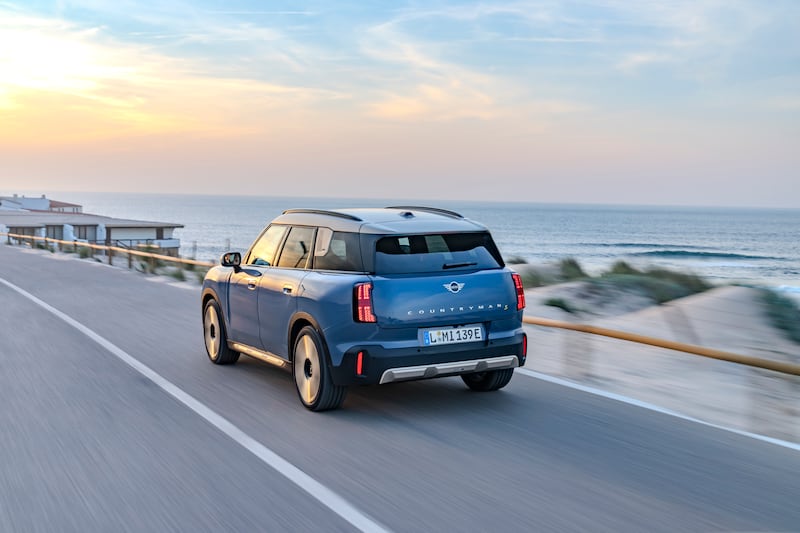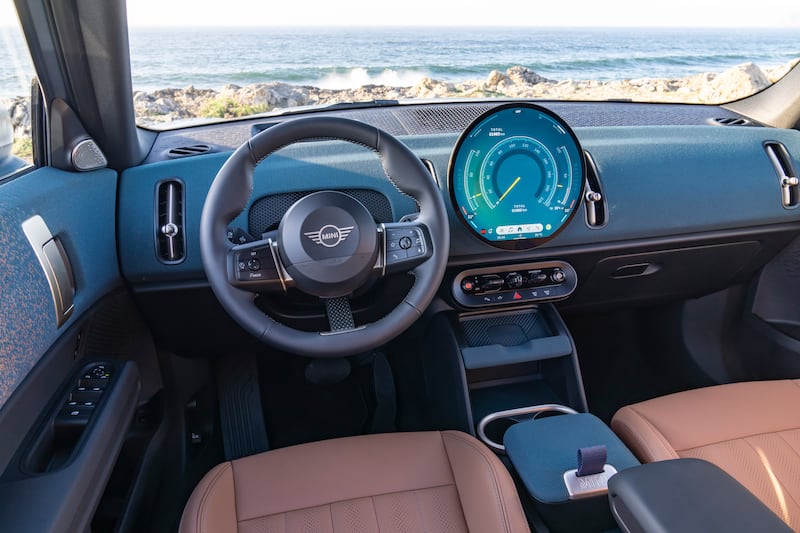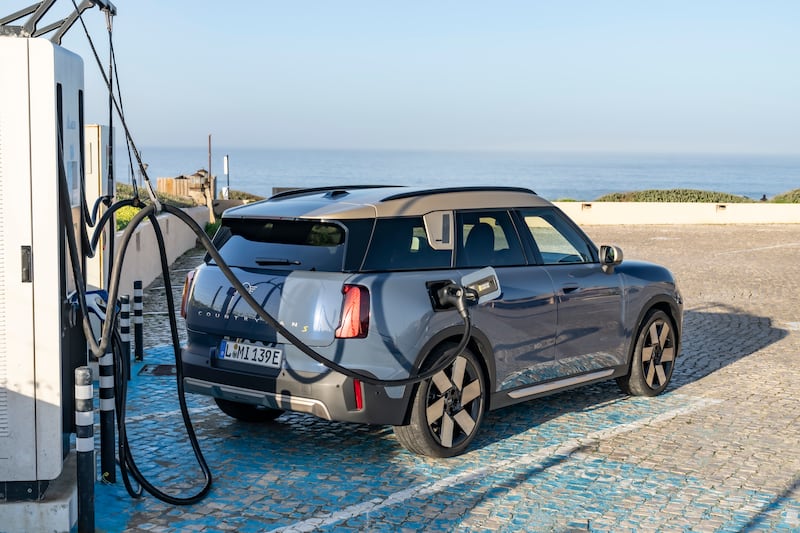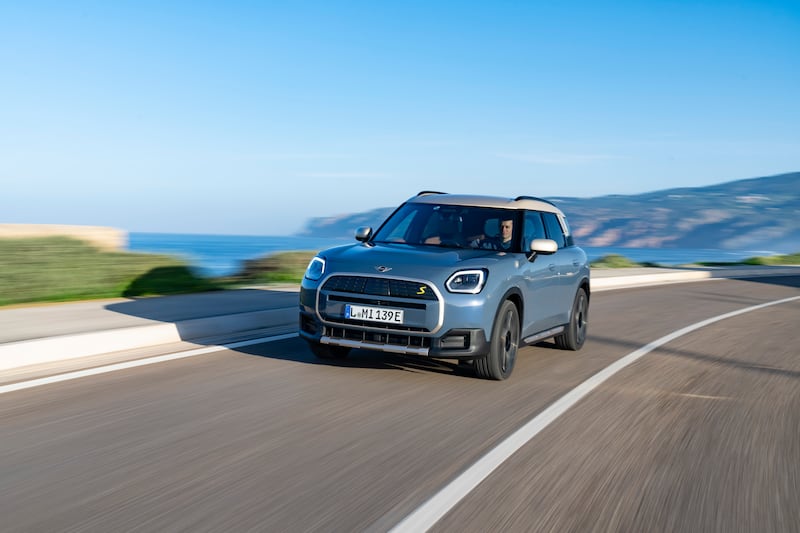This is not the first time that the Cooper name has ridden to the Mini’s rescue. 60 years ago, a bright red Austin Mini Cooper S took a historic victory on a snowbound Monte Carlo rally. That diminutive racer, with its famed EJB 33 number plate, not only established a motor sports dynasty, but effectively created the idea of a small, affordable sporting car – a hot hatch with no hatch.
British Leyland spitefully dropped the Cooper name from the Mini line-up in the 1970s, thanks to a row over royalty fees, but the name was revived to bring sparkle (and inflated prices) back to the Mini line-up in the 1990s, and of course when BMW reinvented both the Mini and its brand in 2001, the Cooper name was present and correct on the bootlid.
That entirely new Mini is coming up for its 25th birthday, but the brand that it re-established is undergoing an astonishing change. The new electric Mini hatchback is now almost on sale, and it will be followed later this year by petrol-powered models and a convertible. There’s a new mid-size Aceman coming soon too, which will be electric-only and fills the whole left by the (sadly departed) Mini Clubman estate.
Then there’s this, the new Countryman, and I feel it’s appropriate here to stop and take stock. The original Countryman (ignoring the 1960s an 1970s models for a moment) was launched in 2007, and while it was big by Mini standards – certainly in terms of height and width – it wasn’t actually all that large a vehicle. In fact, at 4m in length, it was the same length overall as a Ford Fiesta, but with much more interior and boot space thanks to its height. It was, although chunky, still an entertaining car to drive, and just about skirted around any issues of a larger model still being called a Mini.

Now, though, we come to the third generation Countryman. Whereas that first model was a 4m car, this one breaks the tapes at 4.43m. Doesn’t sound like much of a difference? Well, allow me to quantify that for you – the new Countryman is just one solitary millimetre shorter than a 1991 Ford Explorer. Yes, the one that gets eaten by a T-Rex in Jurassic Park. That was not a small car. And neither is the new Countryman. In fact, at 1.65m tall, I know fully-grown adults who are shorter.
The cabin is swathed in a knitted, soft-touch fabric (made from plastic fished from the ocean) which, depending on the model, subtly alters colour as you move rearwards
This is an imposing car, and that immediately sets alarm bells ringing when it comes to the badge. Is it really a Mini? That may sound like an airy fairy, academic question, but if brands don’t stay true to their core principles, customers often start to wander off.
[ Our first look: Mini Cooper hatchback and Countryman EVsOpens in new window ]
Sonja Hengstler, the project leader for the new Countryman, defended the gain in size (and weight, to which we’ll come in a moment). She told The Irish Times: “We have designed a car to cater for modern families, who need more space but without compromising on the brand’s essence. That the new car is 4.4m long makes it suitable for families who need it as a first or only car. It allows for more comfort and practicality while still maintaining Mini’s signature style.”

The Countryman certainly majors on comfort and practicality. The cabin is swathed in a knitted, soft-touch fabric (made from plastic fished from the ocean) which, depending on the model, subtly alters colour as you move rearward. The front seats are big and exceptionally comfortable, and there’s no faulting the build quality – it possibly helps that this is the first Mini to be made in Germany, at BMW’s Leipzig plant, alongside the factory that makes the batteries for the all-electric versions.
In the centre of the dash is a vast, dinner-plate-sized, perfectly round OLED touchscreen, which at last – literally – squares the circle of trying to have both a touchscreen and an homage to the original 1959 Mini’s central round speedo. It’s a masterclass in how to make a good touchscreen.
The menu takes a little getting used to, but the graphics and colours pop in an expensive-looking fashion that even some premium brands have trouble matching. Beneath the screen there are some physical buttons, for selecting gears, a stereo volume knob, and a retro-ish key-like switch which you twist to fire up the engine or electric motors. To actually get in and out, you need a hands-free key fob, or use your phone as a digital key.
Through the touchscreen, and another sweetly tactile toggle switch, you can choose from as many as eight driving modes, and of course the one you’ll want to pick is Go Kart mode – Mini-speak for Sport
The back seats are almost as impressive, with excellent space and genuine comfort, although the relatively low-set roofline means it can feel a touch as if you’re wearing some kind of helmet. The 550-litre boot should be big enough for all but the fastest-growing families.
[ Past and present of an iconic British car – the MiniOpens in new window ]
Our first test drive is of the first all-electric Countryman, and this is the range-topping EV model – the Countryman S E ALL4. That means two electric motors, four-wheel drive, 313hp, 494Nm of torque, and a range of up to 433km from its 64.7kWh battery.

Yeah, about that. On a clement day – 15 degrees Celsius, with light breezes coming off the Atlantic – our Countryman S E struggled to reach an indicated range of 250km on a full charge. Now, that did improve a bit during the drive, so that I reckon on a full charge we’d have reached something like 330km, but that’s a long way short of claimed. For the record, we averaged 20.3kWh/100km.
It’s not as if there’s a huge amount of reward when you get to a twisty road. Through the touchscreen, and another sweetly tactile toggle switch, you can choose from as many as eight driving modes, and of course the one you’ll want to pick is Go Kart mode – Mini-speak for Sport.
Which is all fine, but with 2,050kg of weight to deal with, this Countryman really struggles on a twisty road. That weight blunts what feels like initial eagerness in a straight line, and mid-corner bumps really, really upset the suspension. You can feel the springs and dampers struggling to contain the mass of all that battery moving about, and sometimes it really feels as if they’ve just given up.
The Countryman JCW gets a 300hp turbocharged four-cylinder petrol engine, four-wheel drive, and it beats the electric version to 100km/h by two-tenths of a second
It’s a better car by far on a bigger, smoother road where you can settle into an exceptionally comfortable and refined cruise, but c’mon, this is a Mini. It ought be the heir to the legacy of Hopkirk, Altonen, and Makinen. But it’s not. It’s just a big, heavy, ponderous SUV that happens to have a Mini badge.

Unless, that is, you go for the other model we were allowed to drive – the John Cooper Works Countryman. Mini is ramping up the John Cooper Works brand, named for the eponymous head of the once-dominant Cooper Formula One team, and the man who convinced an apparently uninterested management at the British Motor Corporation to make a sporty Mini in the first place. Mini wants JCW to become its own version of M-Sport or AMG.
[ Test drive: BYD’s Seal-U SUV to come with hybrid powerOpens in new window ]
The Countryman JCW gets a 300hp turbocharged four-cylinder petrol engine, four-wheel drive, and it beats the electric version to 100km/h by two-tenths of a second. Which is not much, but out on the same twisty, bumpy road, the JCW comes to appropriate life. It’s far from perfect, and still hamstrung by its weight and bulk, but unlike the S E it feels at least a little agile, a little biddable, and a bit of fun.
Perhaps the best compromise would be to wait for the arrival of the single-motor electric Countryman E, which will be slower but have more range and weigh just a touch less. There will be conventional petrol and diesel models too.
The JCW’s sheer expense (Mini Ireland hasn’t set a price yet, but it won’t be small) counts it out for all but a tiny few, and it’s hardly the most environmentally friendly solution. But it’s more of a Mini than the electric one.
Lowdown: Mini Countryman S E ALL4.
Power: 230kW twin-e-motors developing 313hp and 494Nm of torque, powering all four wheels via a single-speed automatic transmission.
CO2 emissions (annual motor tax) 0g/km (€120).
Electric consumption: 17.0kWh/100km (WLTP).
Electric range: 433km (WLTP)
0-100km/h: 5.6 seconds
Price: €54,630 as tested, Countryman starts from €48,550.
Verdict: Slick cabin and great screen, but the EV version is too hefty and too blunt to be a true Mini. JCW at least allows a little bit of fun.





